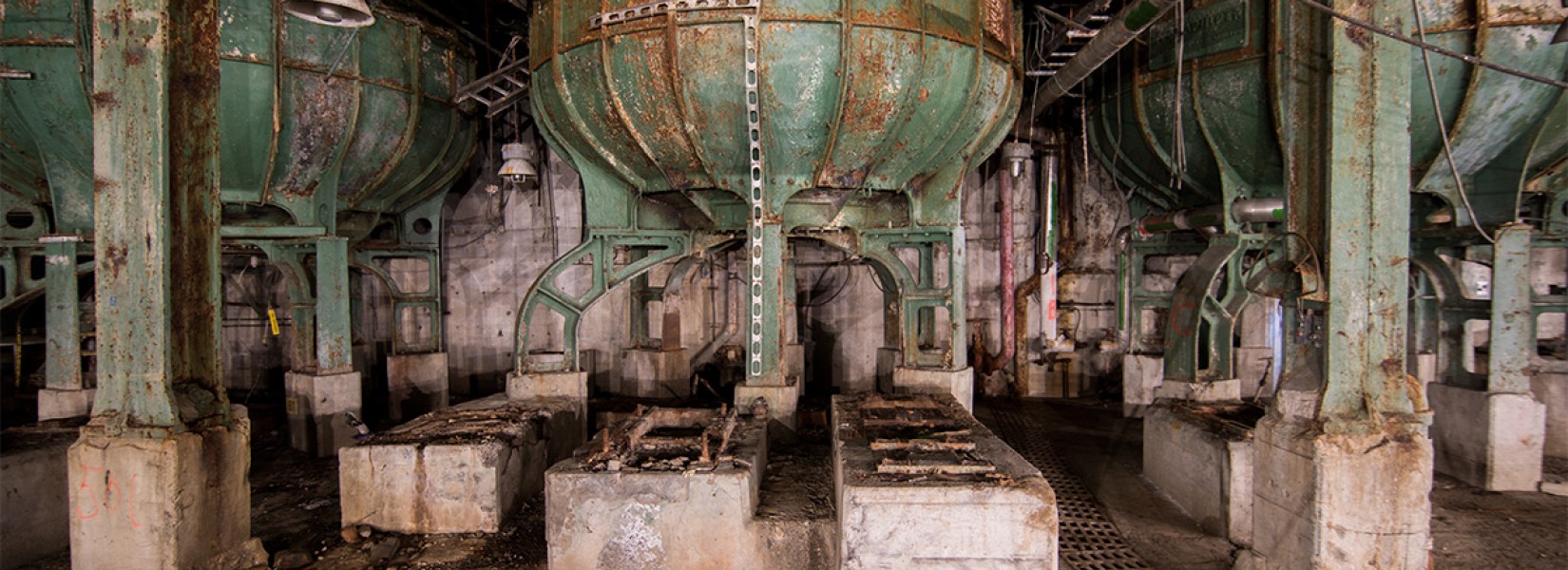For the region, it is a vestige of an industrial era that is now over. Whereas in the past, the factory gave a salary to nearly a hundred employees, the complex is now padlocked and deserted, although monitored by about twenty surveillance...
The abandoned paper mill
A life for a few pennies
This is one of the oldest stationery in Quebec. Founded in 1851 by a american businessman, the company is composed of a half-dozen buildings on a fifteen hectares site. Saying that the site is large is an understatement, not only because it has a hydroelectric plant, but the company is also located on both banks of the Ottawa River, which means that the company is in Quebec and Ontario.
The plant will initially specialize in the manufacture of matches and in 1869, the plant produced 1.5 million unities per hour. Recognized for poor working conditions (up to 20 fires could break out every day), the plant was headed by an unscrupulous boss who showed no respect for its employees. At that time, the big bosses of the city are called each other in important municipal positions to keep control of urban and industrial life.
Very quickly, the plant begins to hire young girls aged 12 to 20 years old for two reasons: their dexterity and their advantage to be paid barely a third of what men earn. Their duties will be thankless and extremely harmful to their health. We should remember that before 1913, the matches were soaked in phosphorus, a highly toxic material that caused jaw necrosis. As no treatment existed, affected women had to be amputated a portion of the jaw. If nothing were done, the bone broke down and gave off a pus that, when mixed with saliva, causing anemia or even death.
Working conditions are miserable and incredibly dangerous. As employees working with flammable materials, all the women had a bucket of water next to their workstation.
It is also here that was born the first female union in Canada and, when a strike will occur in the 20s, several unsightly acts will be committed as this framework who will order his driver to "running into the pile."
In 1924, more than 2,500 people work there. Sold and resold later, the plant will close its doors in 2007, sending the unemployment last 185 employees. Eventually, the site will be abandoned for several years.
Today, the site belongs to a company who wants to revitalize the area with condos and commercial premises.
Related content
Heavily damaged by the time, the old copper mine is closed for several years. While its lower floors are completely flooded with muddy and stagnant water, the ground floor was, meanwhile, weakened by a sedimentary rock ceiling that collapsed in...
No doubt, this is a mysterious building. There is no reliable information about this abandoned building on the Internet. Impossible to corroborate the details found here and there. Indeed, even the name of the building can’t be confirmed. While...
It's over 92 years of industrial history that ended in 2004 when the Spexel factory was closed down. The story of this plant start in 1912 when is built the paper mill, which took the name of Howard Smith Paper Mill. Over the following years, the...













































